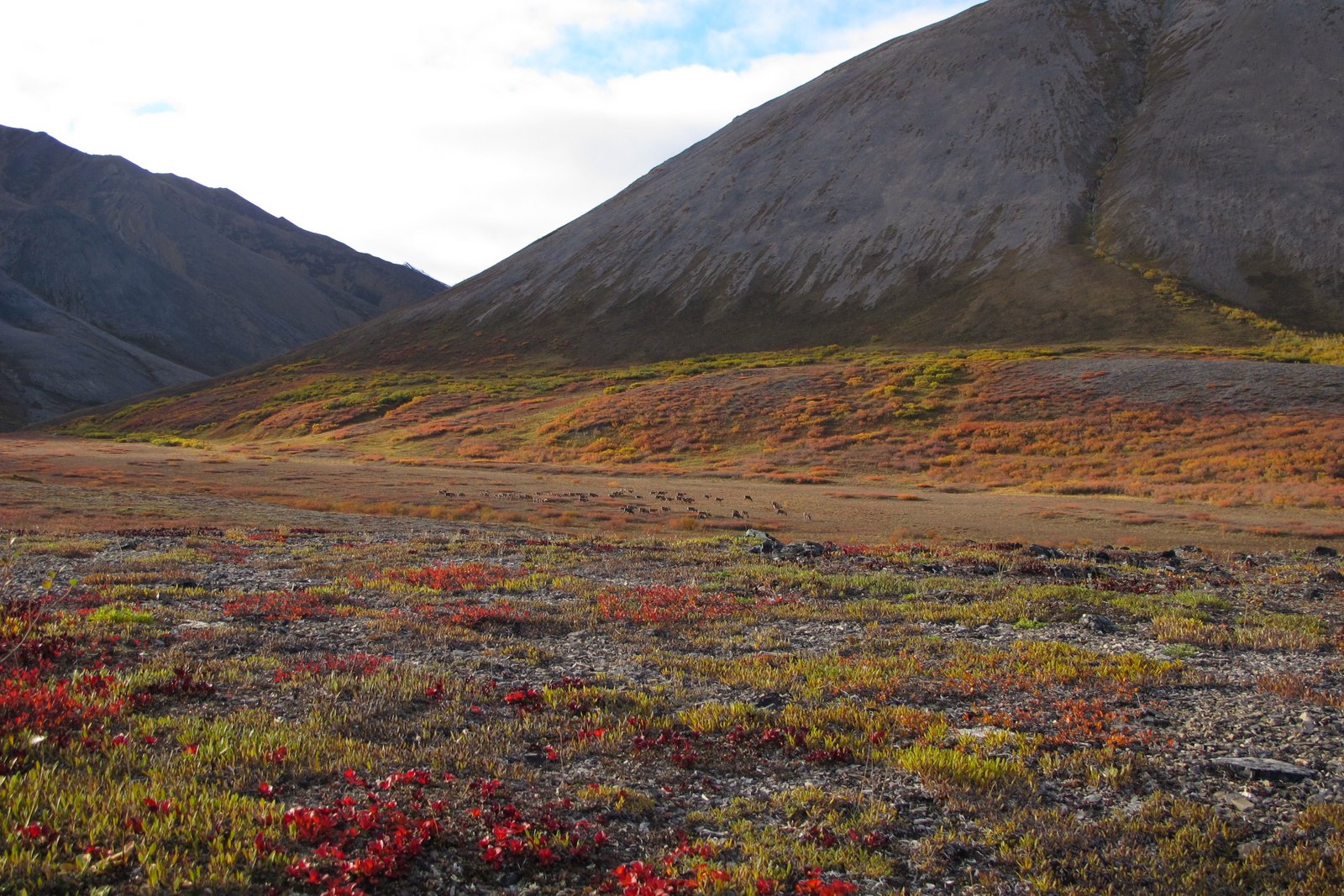The Biden administration is reconsidering a controversial mining access road in Alaska’s Arctic
A road to the Ambler Mining District was approved by the Trump administration. Now the Interior Department wants to pause court challenges while it weighs its next move.

The Biden administration is taking a fresh look at Trump-era approvals for a controversial 211-mile industrial access road planned across the Brooks Range foothills in Arctic Alaska, according to court documents filed this week.
The Interior Department, in motions filed in federal court in Anchorage on Tuesday, seeks a 60-day stay of action in the dual lawsuits challenging the Trump administration’s approval of the Ambler Mining District Industrial Access Project.
The delay to Nov. 29 is needed because of information learned in meetings held by Interior officials in July with tribes and residents affected by the Ambler project, as well as follow-up government-to-government consultations expected sometime in October, the government said in its motions.
“The Department needs additional time to fully and fairly consider matters being brought to its attention during these discussions and consultations prior to further proceedings in this case,” said the motion, filed in both pending cases that are challenging approvals of the industrial road.
The approval of the so-called Ambler road — planned to link the Ambler Mining District in Alaska’s remote northwest Arctic region to the state’s road system — is among a group of Trump-era policies and decisions on Arctic Alaska projects that are being challenged in court and are under Biden administration review for potential changes or reversals.
In August, Interior Secretary Haaland announced that the department is reopening its environmental review of oil leasing in the Arctic National Wildlife Refuge. The Bureau of Land Management has launched a supplemental environmental impact statement on refuge leasing.
Interior also revealed, through court documents filed in early September in lawsuits that challenged the Trump administration management plan for the National Petroleum Reserve in Alaska, that it is reviewing that policy and considering possible changes. The Trump administration’s NPR-A integrated activity plan, made final in the last days of that administration, opened more than 80 percent of the reserve to oil development, including sensitive Teshekpuk Lake. The Trump plan replaced an Obama-era plan that had allowed leasing in about half of the reserve but also strengthened protections for Teshekpuk Lake and other ecologically important areas.
The Ambler road project is being pursued by the Alaska Industrial Development and Export Authority, a state entity. Proponents say the Amber Mining District, known for decades to be rich in copper and other minerals, cannot be commercially developed unless there is an access road.
The company that would operate the mines and would benefit from the construction of the industrial road is Vancouver-based Trilogy Metals Inc.
Trilogy has partnered with a much larger company, Australia’s South32, to create Ambler Metals LLC, which is exploring and developing deposits in the Ambler Mining District.
The road, as well as the proposed operating mines that the road would access, have drawn opposition from tribal governments, environmentalists, hunters and others. Among their concerns are impacts to caribou and the prospect of the state of Alaska, which is struggling with fiscal problems, bankrolling a road that would be used by a private company.
One of the lawsuits was filed in August of 2020 by a coalition of environmental groups, and the second lawsuit was filed by the Tanana Chiefs Conference, a consortium of Athabascan tribal governments, as well as individual tribal governments in several villages in the general region where the industrial road would be built.
But not all Indigenous organizations oppose mining in the region or the Ambler road.
NANA Corp., the Kotzebue-based Alaska Native regional corporation owned by northwestern Alaska Inupiat, owns lands in the Ambler Mining District and has partnered with Ambler Metals in the mining project. The corporation has not taken a public stance on whether the road should be built or the mines commercially developed, but it has entered the lawsuits as an intervenor-defendant and has highlighted the potential economic benefits.
NANA, its shareholders and the Inupiat residents of the Northwest Arctic Borough are heavily dependent on the Red Dog Mine, which is located on NANA land, the corporation said in intervenor motions it filed in May. Now that Red Dog, for years the world’s largest zinc producer, is reaching the end of its productive life, NANA has looked to Ambler mining as a possible successor, the company said in its intervenor motions filed in May.
NANA’s primary interest continues to be to protect subsistence, the motion said. “But NANA also seeks to preserve full access to the Ambler Mining District, whenever actual development occurs,” it said.
Additionally, one of NANA’s founders, Willie Hensley, is on Trilogy Minerals’ board of directors.
The tribal government in Kobuk, the only Inupiat village involved in the Tanana Chiefs Council lawsuit, in January withdrew as a plaintiff in that case.